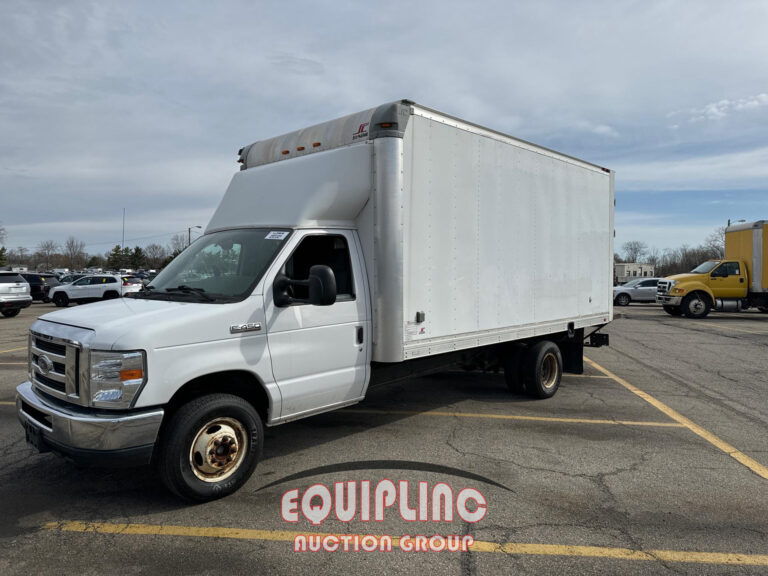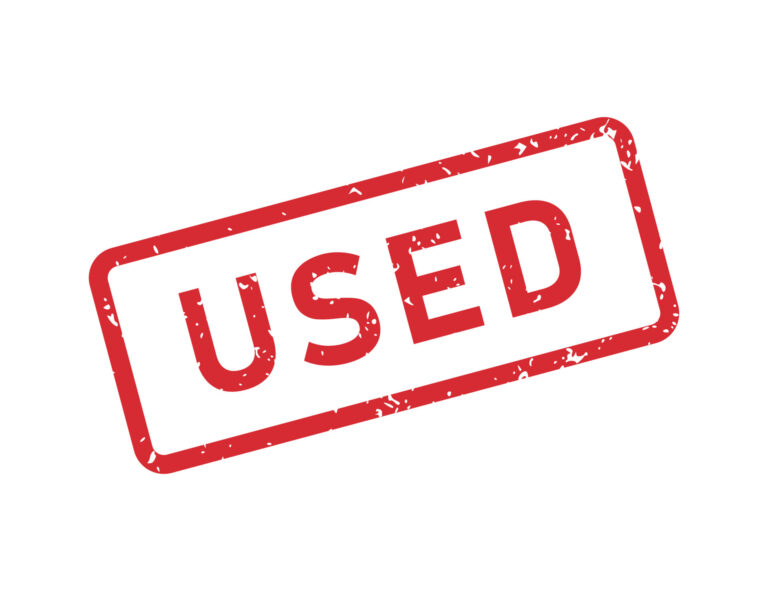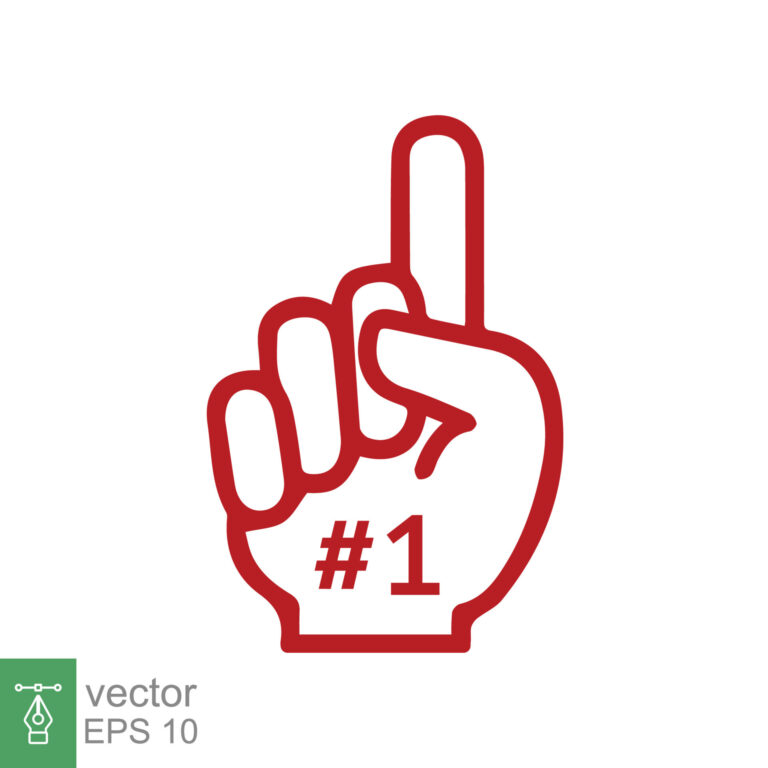Three-Quarter Ton Trucks For Sale: The Ultimate Guide to Finding Your Heavy-Duty Companion
Three-Quarter Ton Trucks For Sale: The Ultimate Guide to Finding Your Heavy-Duty Companion cars.truckstrend.com
In the vast landscape of pickup trucks, the three-quarter ton segment occupies a crucial sweet spot. Neither as nimble as a half-ton nor as overtly commercial as a one-ton, these robust machines offer an unparalleled blend of formidable capability and surprising daily drivability. If you’re in the market for a vehicle that can confidently tow your RV, haul serious construction materials, or tackle demanding off-road trails without feeling like an eighteen-wheeler, then a three-quarter ton truck might just be your perfect match.
This comprehensive guide delves into everything you need to know about three-quarter ton trucks for sale, from understanding their core specifications to navigating the buying process, ensuring you make an informed decision that perfectly aligns with your needs and budget.
Three-Quarter Ton Trucks For Sale: The Ultimate Guide to Finding Your Heavy-Duty Companion
What Defines a Three-Quarter Ton Truck?
The term "three-quarter ton" is a historical relic, originally referring to a truck’s approximate payload capacity (0.75 tons or 1,500 lbs). While modern trucks in this class vastly exceed that figure, the nomenclature has stuck. Today, three-quarter ton trucks are typically identified by their series numbers: Ford F-250, Ram 2500, Chevrolet Silverado 2500HD, and GMC Sierra 2500HD.
Key defining characteristics include:
- Gross Vehicle Weight Rating (GVWR): This is the maximum permissible total weight of the truck, including the vehicle itself, passengers, cargo, and any accessories. For three-quarter tons, GVWR usually ranges from 8,500 lbs to 10,000 lbs. This higher rating, compared to half-tons (typically under 8,500 lbs), necessitates heavier-duty components.
- Payload Capacity: While the name suggests 1,500 lbs, modern 3/4-ton trucks often boast payload capacities ranging from 2,500 lbs to over 4,000 lbs, depending on configuration (cab style, bed length, 2WD/4WD, engine).
- Towing Capacity: This is where three-quarter tons truly shine. They can typically tow 12,000 lbs to over 20,000 lbs with conventional hitches, and even more with fifth-wheel/gooseneck setups, thanks to reinforced frames, stronger axles, larger brakes, and more robust suspension systems than their half-ton counterparts.
- Engine Options: Unlike most half-tons, three-quarter tons frequently offer potent diesel engine options in addition to large gasoline V8s, providing immense torque for heavy hauling and improved fuel economy under load.
- Chassis and Suspension: They feature beefier frames, stronger leaf springs or coil springs (depending on manufacturer), and larger shock absorbers designed to handle constant heavy loads and rough terrain.

These upgrades make three-quarter ton trucks significantly more capable for serious work and heavy recreational use than a half-ton, while still being more manageable and often less expensive than a one-ton (3500/350 series) for those who don’t need maximum capacity.
Why Choose a Three-Quarter Ton Truck?
The decision to opt for a three-quarter ton truck is often driven by a specific set of needs that half-tons simply can’t meet.
Benefits of a Three-Quarter Ton Truck:
- Superior Towing and Hauling: This is the primary reason. If you regularly tow large travel trailers, fifth-wheel RVs, multi-horse trailers, car haulers, or heavy equipment, a 3/4-ton provides the necessary power, stability, and braking performance.
- Durability and Longevity: Built with heavier-duty components, these trucks are designed to withstand more abuse and last longer under strenuous conditions, making them a wise investment for long-term use.
- Enhanced Stability with Loads: The stronger suspension and heavier curb weight significantly improve stability when towing or hauling heavy loads, reducing sway and increasing driver confidence.
- Versatility: While capable workhorses, many modern 3/4-ton trucks also offer refined interiors, advanced technology, and comfortable rides, making them suitable for daily commuting or family road trips when not working.
- Diesel Power Option: The availability of powerful diesel engines provides incredible low-end torque, excellent fuel economy when under load, and often a longer engine lifespan when properly maintained.
- Better Resale Value: Their inherent durability and strong demand for capability often translate into better resale values compared to lighter-duty trucks.
Ideal Use Cases:
- Heavy Recreational Towing: Large RVs, boats, toy haulers.
- Construction and Landscaping: Transporting tools, materials, small equipment.
- Agriculture and Ranching: Hauling livestock, feed, and farm implements.
- Commercial Use: Delivery services, utility work, mobile workshops.
- Overlanding and Off-roading: When equipped with appropriate modifications, their robust chassis can support heavier gear and tackle challenging terrains.
Key Considerations When Buying
Purchasing a three-quarter ton truck is a significant investment. Careful consideration of several factors will help you find the right vehicle.
New vs. Used:
- New: Offers the latest technology, full warranty, customizable options, and peace of mind. Higher upfront cost and immediate depreciation.
- Used: Significant cost savings, slower depreciation. Potential for unknown history or wear and tear. A pre-purchase inspection is crucial.
Engine Options:
- Gasoline: Typically a large V8 (e.g., Ford’s 7.3L Godzilla, GM’s 6.6L V8, Ram’s 6.4L HEMI). Lower upfront cost, simpler maintenance, quicker warm-ups in cold weather. Fuel economy is generally lower, especially under load.
- Diesel: (e.g., Ford Power Stroke, Ram Cummins, GM Duramax). Higher upfront cost, more complex and expensive maintenance. Superior torque for towing, better fuel economy when towing heavy, and often a longer engine life. Can be slower to warm up and have higher fuel costs (diesel fuel price). Choose diesel if you’re consistently towing near the truck’s upper limits.
Cab Configurations:
- Regular Cab: Two doors, single row of seats. Max payload/towing, lowest price, smallest footprint.
- Extended/Quad/Double Cab: Two full-size front doors and two smaller rear doors (or suicide doors). More interior space than regular cab, but less than crew cab.
- Crew Cab: Four full-size doors, spacious rear seating. Most popular for families or work crews. Reduced payload/towing capacity compared to regular cab due to higher curb weight.
Bed Lengths:
- Short Bed (approx. 6.5 feet): More maneuverable, easier to park.
- Long Bed (approx. 8 feet): Max cargo capacity, essential for hauling longer items like lumber or for mounting a fifth-wheel hitch without a slider.
Drivetrain:
- 2WD (Two-Wheel Drive): Lighter, slightly better fuel economy, lower cost. Ideal if you don’t need off-road capability or frequently drive in snow/ice.
- 4WD (Four-Wheel Drive): Essential for off-road adventures, towing on slippery surfaces, or navigating harsh winter conditions. Adds weight, complexity, and cost.
Trim Levels & Features:
Three-quarter ton trucks range from basic work trucks (e.g., XL, WT, Tradesman) with vinyl seats and minimal tech to luxurious models (e.g., Platinum, Denali, Laramie Longhorn) with leather, heated/ventilated seats, advanced infotainment, and driver-assist features. Balance your needs with your budget.
Payload & Towing Capacity:
Crucially, understand the specific payload and towing ratings for the exact configuration of the truck you are considering. These numbers vary significantly based on engine, cab, bed, 2WD/4WD, axle ratio, and even specific options. Always check the sticker on the door jamb or the owner’s manual. Never exceed these ratings for safety and legal reasons.
Inspection (for used trucks):
Beyond the basic check, pay close attention to the frame (look for rust, cracks, or bends), suspension components (worn bushings, leaky shocks), brakes (pad thickness, rotor condition), and transmission (smooth shifts, no slipping). For diesel engines, check for excessive smoke, odd noises, and service records related to emissions systems.
Maintenance History (for used trucks):
A well-documented service history is gold. It indicates proper care and can help predict future maintenance needs.
Navigating the Market: Where to Find Three-Quarter Ton Trucks For Sale
The market for three-quarter ton trucks is robust, offering several avenues for potential buyers:
- Dealerships (New and Used): Authorized new truck dealerships often have a good selection of used heavy-duty trucks as trade-ins. They offer financing, warranties (on new and certified pre-owned), and service departments.
- Online Marketplaces: Websites like AutoTrader.com, Cars.com, CarGurus.com, and Edmunds.com allow you to filter by make, model, year, price, and features, providing a vast inventory from both dealerships and private sellers.
- Private Sellers: Check classifieds like Craigslist, Facebook Marketplace, or local community forums. Prices might be lower, but the transaction involves more risk and responsibility for the buyer (e.g., arranging inspections, handling paperwork).
- Auctions: Public and dealer auctions can offer competitive prices, but often require quick decisions and trucks are sold "as-is," making them suitable for experienced buyers or those with a mechanic on standby.
- Specialized Truck Dealerships: Some dealerships focus specifically on commercial and heavy-duty trucks, offering a more knowledgeable sales staff and a wider selection of work-ready vehicles.
Tips for a Successful Purchase
- Define Your Needs Clearly: Before you even start looking, list exactly what you plan to do with the truck. What will you tow? How much weight will you carry? How often will you use it for these tasks? This will dictate the minimum capacities and features you need.
- Set a Realistic Budget: Beyond the purchase price, factor in insurance, fuel costs (especially for larger engines), higher tire costs, and potentially more expensive maintenance.
- Test Drive Thoroughly: Don’t just take it around the block. Drive on highways, through city traffic, and ideally, test it with a load similar to what you’ll be hauling. Listen for unusual noises, check braking performance, and assess comfort.
- Get a Pre-Purchase Inspection (for used trucks): This is non-negotiable. Have an independent, trusted mechanic inspect the truck. They can identify potential issues that you might miss, saving you thousands down the road.
- Negotiate Price and Terms: Research market values for similar trucks to arm yourself with leverage. Don’t be afraid to walk away if the deal isn’t right.
- Understand Financing Options: Explore financing through dealerships, banks, or credit unions. Compare interest rates and terms.
- Check Recall History: Use the VIN to check for any open safety recalls on the National Highway Traffic Safety Administration (NHTSA) website.
Potential Challenges and Solutions
While three-quarter ton trucks offer immense advantages, they come with a few considerations:
- Fuel Economy (Unloaded): When not towing, the larger engines and heavier curb weight mean these trucks are less fuel-efficient than smaller vehicles.
- Solution: Consider a diesel engine if you do a lot of heavy towing (they are more efficient under load). Optimize driving habits, and remember that the increased capability is the trade-off.
- Maneuverability and Parking: Their larger size can make navigating tight city streets and parking lots challenging.
- Solution: Utilize parking assist features, practice driving a larger vehicle, and choose a shorter bed or cab configuration if maximum maneuverability is a priority.
- Cost of Ownership: Tires, brakes, and parts can be more expensive due to their heavy-duty nature. Diesel maintenance can also be pricier.
- Solution: Budget accordingly for higher maintenance costs. Regular preventative maintenance can help avoid costly repairs. Consider DIY for simpler tasks if you’re mechanically inclined.
- Finding the "Right" Truck: Specific configurations (e.g., long bed, diesel, specific trim) can sometimes be harder to locate in the used market.
- Solution: Be patient, expand your search radius, and utilize online alerts that notify you when new listings match your criteria.
Price Table: Example Three-Quarter Ton Trucks For Sale (Illustrative Averages)
Please note: Prices are highly variable based on mileage, condition, specific features, region, and market demand. This table provides general illustrative averages.
| Make/Model | Year Range | Condition | Engine Type | Average Price Range (USD) | Key Features/Notes |
|---|---|---|---|---|---|
| Ford F-250 Super Duty | 2017-2022 | Used | 6.2L Gas / 6.7L Diesel | $35,000 – $70,000+ | Popular for its robust Power Stroke diesel, high towing capacity, and various trim levels from work-ready XL to luxurious Platinum. Strong resale value. |
| 2023-2024 | New | 6.8L Gas / 7.3L Gas / 6.7L Diesel | $50,000 – $90,000+ | Latest generation features updated technology, improved towing, and new engine options. | |
| Ram 2500 | 2015-2021 | Used | 5.7L Gas / 6.4L Gas / 6.7L Cummins Diesel | $30,000 – $65,000+ | Known for its comfortable coil-spring rear suspension (on most trims), powerful Cummins diesel, and upscale interior options. |
| 2022-2024 | New | 6.4L Gas / 6.7L Cummins Diesel | $48,000 – $85,000+ | Continues to offer a blend of capability and refinement, with advanced tech and luxury trims. | |
| Chevrolet Silverado 2500HD | 2015-2019 | Used | 6.0L Gas / 6.6L Duramax Diesel | $28,000 – $55,000+ | Reliable workhorse with strong Duramax diesel. Often seen with no-frills work packages. |
| 2020-2024 | New/Used | 6.6L Gas / 6.6L Duramax Diesel | $45,000 – $80,000+ | Redesigned with more aggressive styling, increased capacities, and improved interior. | |
| GMC Sierra 2500HD | 2015-2019 | Used | 6.0L Gas / 6.6L Duramax Diesel | $29,000 – $58,000+ | Mechanically identical to the Silverado 2500HD but often positioned with more premium features and styling, especially in Denali trim. |
| 2020-2024 | New/Used | 6.6L Gas / 6.6L Duramax Diesel | $48,000 – $85,000+ | Shares updates with the Silverado, with distinct styling and luxury options like the Denali Ultimate and AT4X for off-road enthusiasts. |
Note: "Used" prices depend heavily on mileage, trim, condition, and region. "New" prices are MSRP and can vary with options and dealer incentives.
Frequently Asked Questions (FAQ)
Q: What does "three-quarter ton" mean?
A: Historically, it referred to a truck’s approximate payload capacity of 1,500 pounds (0.75 tons). Today, it’s a classification for heavy-duty trucks (e.g., Ford F-250, Ram 2500, Chevy Silverado 2500HD) that have much higher payload and towing capacities than half-ton trucks but are less extreme than one-ton trucks.
Q: Is a 3/4-ton truck good for daily driving?
A: Yes, many modern 3/4-ton trucks offer surprisingly comfortable rides and refined interiors, making them suitable for daily driving. However, their larger size can make parking and navigating tight spaces more challenging, and fuel economy will generally be lower than smaller vehicles, especially when unloaded.
Q: What’s the difference between a 2500 and 3500 series truck?
A: A 2500 (3/4-ton) has lower Gross Vehicle Weight Rating (GVWR), payload, and towing capacities than a 3500 (1-ton). 3500 series trucks often have stiffer suspensions, higher axle ratings, and may be available with dually (dual rear wheel) configurations for maximum stability and hauling. Choose a 3500 if you consistently need to haul extreme loads or the heaviest fifth-wheel trailers.
Q: Should I get a gasoline or diesel engine in a 3/4-ton truck?
A: If you regularly tow very heavy loads (e.g., over 10,000-12,000 lbs) or tow frequently, a diesel engine is usually the better choice due to its superior torque, better fuel economy under load, and often longer lifespan. For lighter towing, occasional heavy hauling, or lower upfront costs, a gasoline engine is a perfectly capable and more affordable option.
Q: How much can a 3/4-ton truck typically tow?
A: Conventional towing capacity for a 3/4-ton truck typically ranges from 12,000 lbs to over 20,000 lbs, depending on the specific model, engine, axle ratio, and configuration. Fifth-wheel/gooseneck towing capacities can be even higher. Always check the specific truck’s ratings on the door jamb sticker or in the owner’s manual.
Q: What kind of maintenance do 3/4-ton trucks require?
A: They require regular maintenance similar to other vehicles (oil changes, tire rotations, brake checks), but often at shorter intervals for fluids and filters, especially under heavy use. Diesel engines have additional maintenance requirements for their fuel systems, emissions systems (DEF fluid, DPF regeneration), and larger oil capacities, which can make maintenance more expensive than a gasoline engine.
Q: What should I look for when buying a used 3/4-ton truck?
A: Beyond the standard used car checks, focus on the frame for rust or damage, the condition of the tires (expensive to replace), the suspension components, and the braking system. For diesel trucks, inquire about the history of the emissions system and look for excessive smoke or unusual engine noises. Always get a pre-purchase inspection by an independent mechanic.
Conclusion
Three-quarter ton trucks represent the sweet spot for many truck owners: offering substantially more capability than a half-ton without the full-blown commercial scale of a one-ton. Whether you’re an avid RVer, a dedicated tradesperson, or simply someone who needs robust towing and hauling power for occasional heavy tasks, a 2500/250 series truck provides the strength, durability, and versatility to get the job done.
By understanding what defines these powerful machines, carefully considering your specific needs, and approaching the buying process with diligence and informed questions, you can confidently find the perfect three-quarter ton truck for sale that will serve as a reliable, indispensable companion for years to come. Your next adventure, or your next big job, is just a capable truck away.




